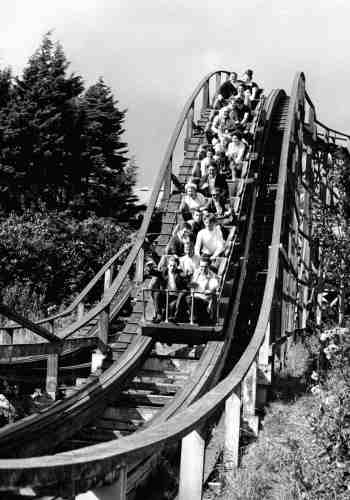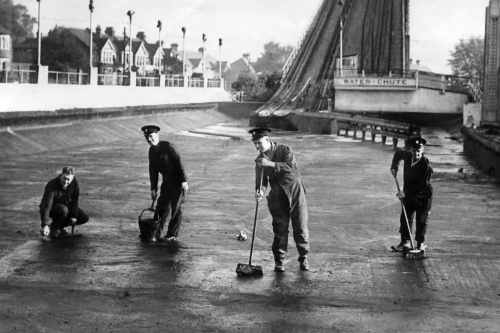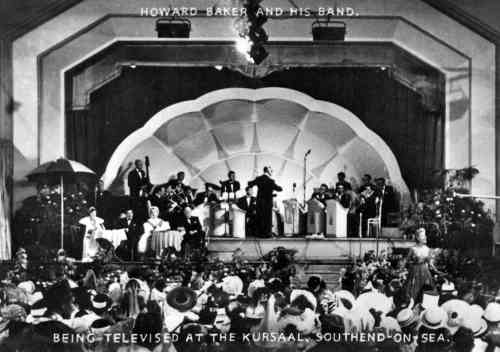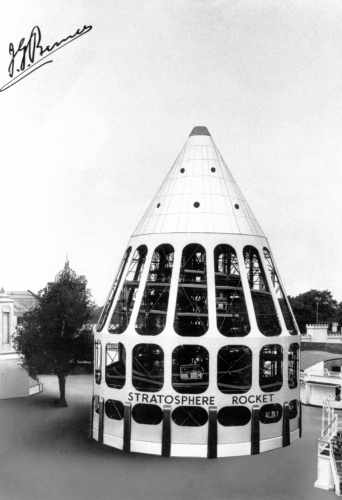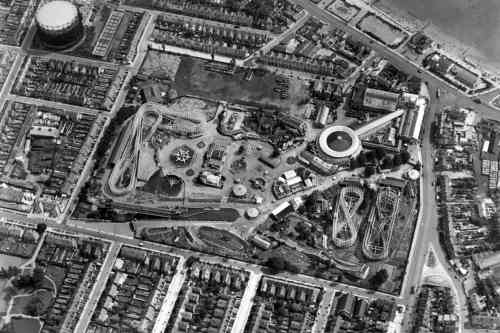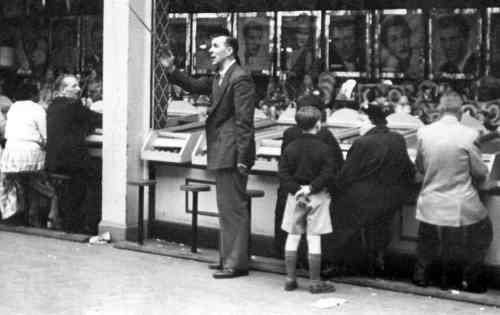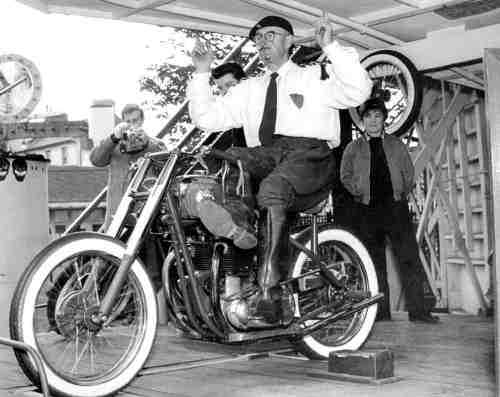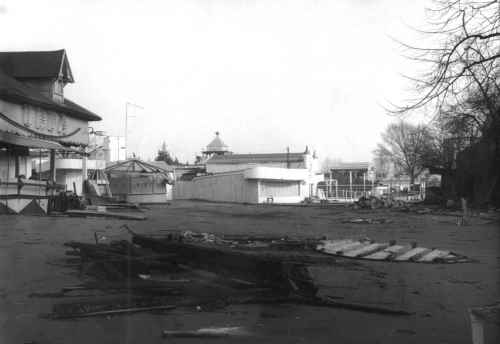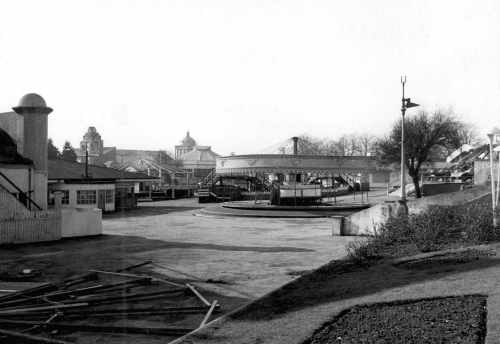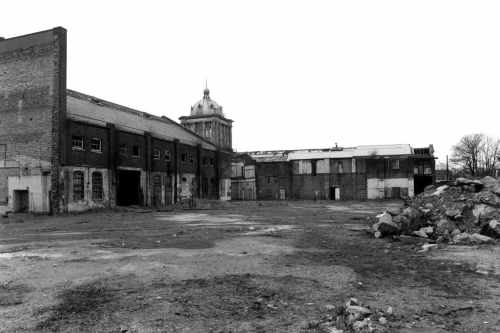|
|
||||||||
|
HOME ARTICLES GALLERIES ABOUT US FORUM LINKS CONTACT JOYLAND BOOKS |
||||||||
|
|
||||||||
|
The Kursaal under Trustees
|
During the Second World War the Kursaal was closed to the public. The Water Chute basin was tarred to ensure it was watertight, and was to be used as a reserve water supply.
A new ride for the opening of the Kursaal after the war was the enormous Stratosphere Rocket ride. This photograph is dated 1945. |
|||||||
|
|
||||||||
|
C.J. Morehouse (the second) 1948-1973
|
An aerial view of the Kursaal taken in the late 1940s. The late 1940s and 1950s were the heyday of the Kursaal, with the park at its greatest extent. The largest ride by far can be seen on the left of the photograph - the Cyclone roller coaster.
Tornado Smith was the most famous of all the Wall of Death riders. Here we see him revving his bike up on the rollers outside the Wall. This was done principally to attract custom.
The Dive Bomber was a fairly short-lived ride in the Kursaal. It is known to have been in the grounds in the early 1950s, but had been removed before 1960.
Whirpools in the Kursaal gardens, photographed in the 1950s. |
|||||||
|
|
||||||||
|
An era ends, another begins
|
The owners and tenants were asked to remove their rides and stalls, and the whole grounds presented, in 1973-4 a picture of forlorn desolation. A small area near to the Kursaal buildings was all that remained of the fairground.
In
1973 the decision was taken to close the Kursaal grounds. Visitor
figures had been declining since the mid 1960s, as holidays to new
and further destinations became available.
By the early 1990s, the damage done to the buildings by neglect was such that much of the original structure had to be demolished.
In the new Millennium the Kursaal buildings live again. Of course, the Kursaal Gardens - the amusement park - can never be recreated, but at least the buildings live on for another generation. |
|||||||
|
||||||||
|
|
||||||||
|
THEMAGICEYE | Terms and Conditions | Privacy Policy | Contact Us |
||||||||

